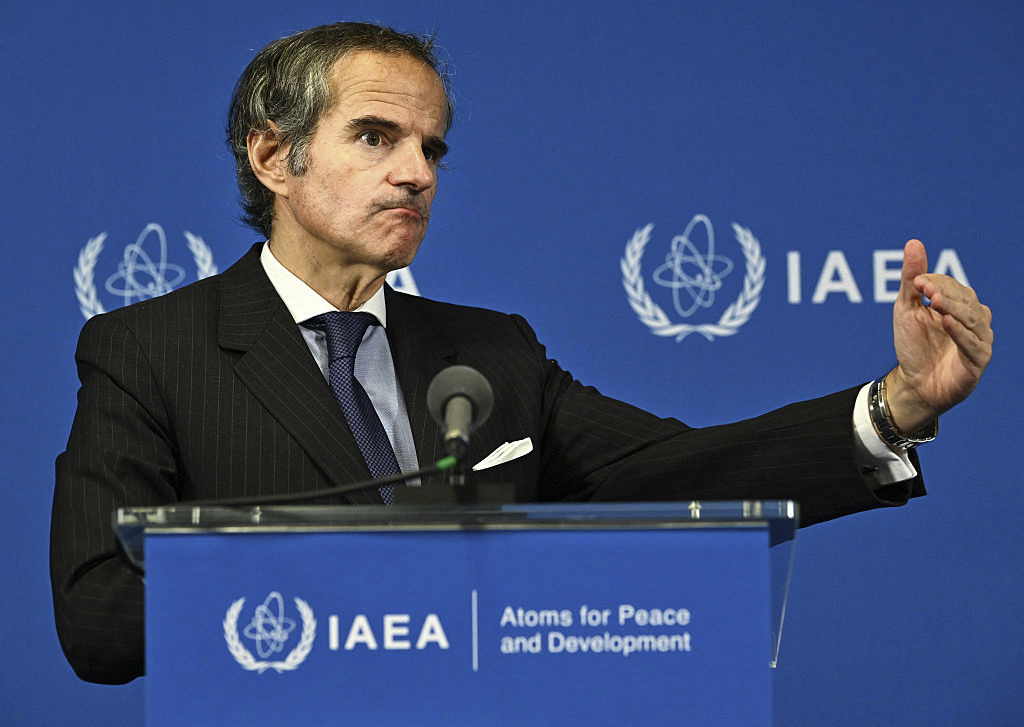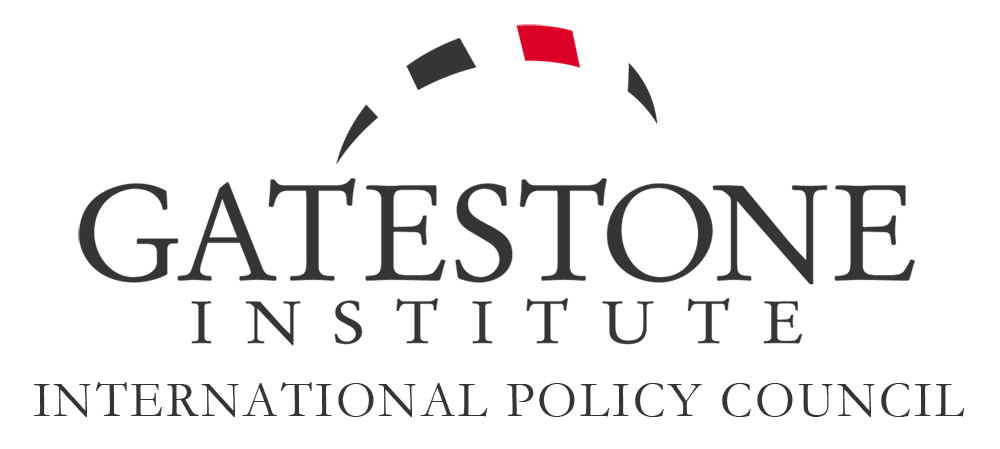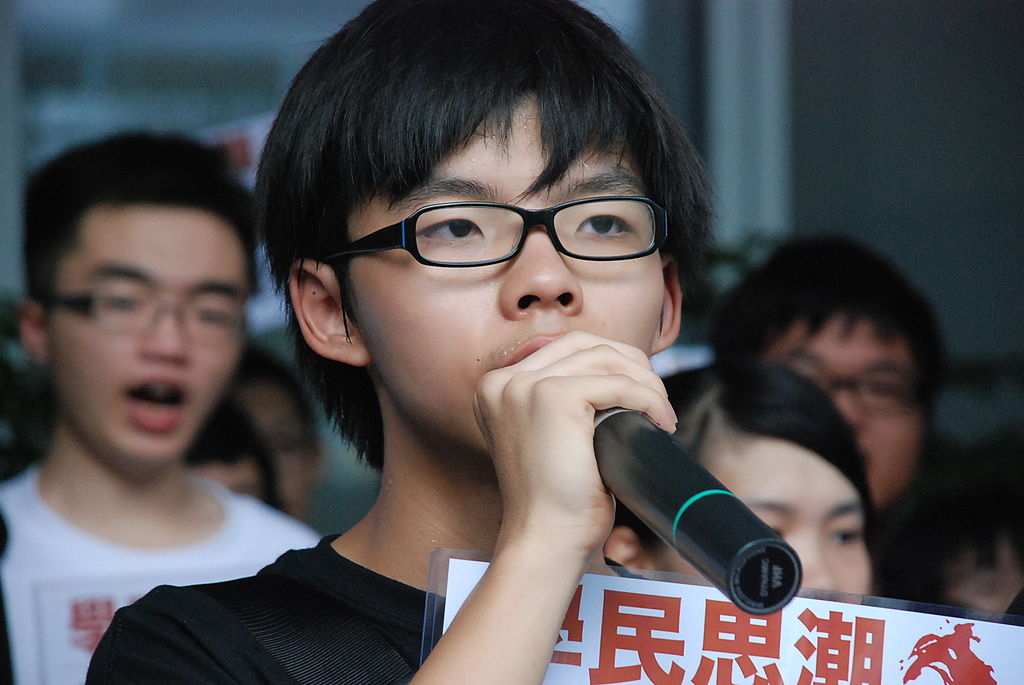
Amid concerns that US President Donald J. Trump is backtracking on his pledge to confront Iran over its controversial nuclear programme, new evidence pointing to Iran's clandestine attempts to develop nuclear weapons should persuade the Trump administration to make the Iran threat one of its top priorities.
The latest evidence that Tehran has spent the past few decades developing nuclear weapons has come in the form of a bombshell report published by the International Atomic Energy Agency (IAEA), the UN-sponsored body responsible for monitoring Iran's nuclear activities.
The IAEA has previously identified a number of glaring inconsistencies in Iran's official declarations about its nuclear programme, which have resulted in the imposition of Western sanctions.
There has, for example, been a long-running dispute lasting nearly two decades between Iran and the West after IAEA inspectors found traces of undeclared enriched uranium at the top-secret Parchin military facility, located around 20 miles southeast of Tehran.
Concerns that Iran has been using the base to test nuclear warhead designs, as well as Tehran's refusal to provide a convincing explanation for the discovery of the enriched material, prompted the imposition of further sanctions.
The Obama administration's failure to address this issue fully, or rather to have backed down fully, when negotiating the flawed JCPOA "nuclear deal" with Tehran in 2015 prompted widespread criticism of the agreement, eventually leading to Trump's decision to withdraw American involvement in 2018.
The ongoing dispute between the IAEA and Tehran over Iran's clandestine nuclear activities has now deepened further, following publication of the organisation's latest findings, which show that Iran carried out secret nuclear activities, with material not declared to the UN nuclear watchdog, at three locations.
A detailed report into Iran's nuclear activities commissioned by the IAEA's 35-nation board of governors in November found that Iran had at least three undeclared nuclear sites until the early 2000s, but has consistently failed to provide "credible answers" about its activities there.
The three sites, at Varamin, Marivan and Turquzabad, were accessed by inspectors from the IAEA in 2019 and 2020, with uranium particles detected at all three sites. The IAEA is still seeking explanations from Iran about uranium traces found years ago at two of four sites it has been investigating. Three of them have hosted secret experiments related to Iran's nuclear programme, the report found.
Nuclear material and/or heavily contaminated equipment from that programme was stored at the fourth site, Turquzabad, between 2009 and 2018, it said.
"The Agency concludes that Iran did not declare nuclear material and nuclear-related activities at three undeclared locations in Iran, specifically, Lavisan-Shian, Varamin, and Turquzabad," the report concludes.
At Lavisan-Shian in Tehran, a disc made of uranium metal was "used in the production of explosively-driven neutron sources" at least twice in 2003, a process designed to initiate the explosion in a nuclear weapon, the report said, adding that it was part of "small-scale" tests.
The findings have led the IAEA to conclude that "these three locations, and other possible related locations, were part of an undeclared structured nuclear programme carried out by Iran until the early 2000s and that some activities used undeclared nuclear material".
The report states bluntly that Iran's cooperation with IAEA continues to be "less than satisfactory" in "a number of respects".
Efforts to obtain an explanation have gone unanswered, said IAEA director general Rafael Grossi when commenting on the report's findings.
"Unfortunately, Iran has repeatedly either not answered, or not provided, technically credible answers to the agency's questions," he said at the quarterly IAEA board meeting.
The lack of answers has meant the IAEA could not conclude that Iran's nuclear programme is "entirely peaceful", as Tehran has long claimed, Grossi said. He accused Tehran of seeking to "sanitise the locations", which he said has impeded the agency's work.
In addition to naming the three new sites suspected of involvement in Iran's nuclear programme, the report also found that Iran had an estimated 400kg of uranium enriched up to 60 per cent as of May 17, marking an increase of more than 133kg since the last report in February.
Uranium needs to be enriched to about 90 per cent to use in nuclear weapons. The amount of Iran's enriched uranium is enough to produce 10 weapons if refined to that level.
Iran's foreign ministry and the Iranian nuclear agency have both rejected the report, calling it, in a joint statement, "politically motivated". They said Tehran will take "appropriate measures" in response to any effort to take action against the country at the Board of Governors meeting, state media reported, without elaborating.
The findings of the report, which are being discussed at this week's IAEA meeting in Vienna this week, should certainly leave the Trump administration in no doubt about the extent of the duplicity that has long characterised Tehran's dealings with the IAEA over its nuclear ambitions.
After the latest damning assessment of Iran's clandestine nuclear activities, at the very least there is likely to be a push by the US, Britain, France and Germany, who were signatories to the Obama administration's 2015 JCPOA deal, to declare Iran to be in violation of its non-proliferation obligations, thereby paving the way for the reimposition of sanctions.
The findings should also persuade Trump to adopt a more robust approach in his dealings with Iran. Having consistently insisted that Iran "cannot have nuclear weapons", there have been suggestions in recent weeks that Trump is "going wobbly" when it comes to confronting the ayatollahs, in the belief that he can still negotiate a new nuclear deal.
This is not warmongering; this is peace-mongering – to prevent Iran from creating even greater devastation later.
Rather than persisting with his efforts to appease the ayatollahs, the publication of new damning evidence about Iran's clandestine nuclear weapons programme should persuade Trump that he has no serious option other than to confront Tehran over its deceitful nuclear activities, as well as its ballistic missile programme, also able to conventionally blackmail Iran's oil-rich Sunni neighbours, Europe and eventually possibly the US itself.
Con Coughlin is the Telegraph's Defence and Foreign Affairs Editor and a Distinguished Senior Fellow at Gatestone Institute.


